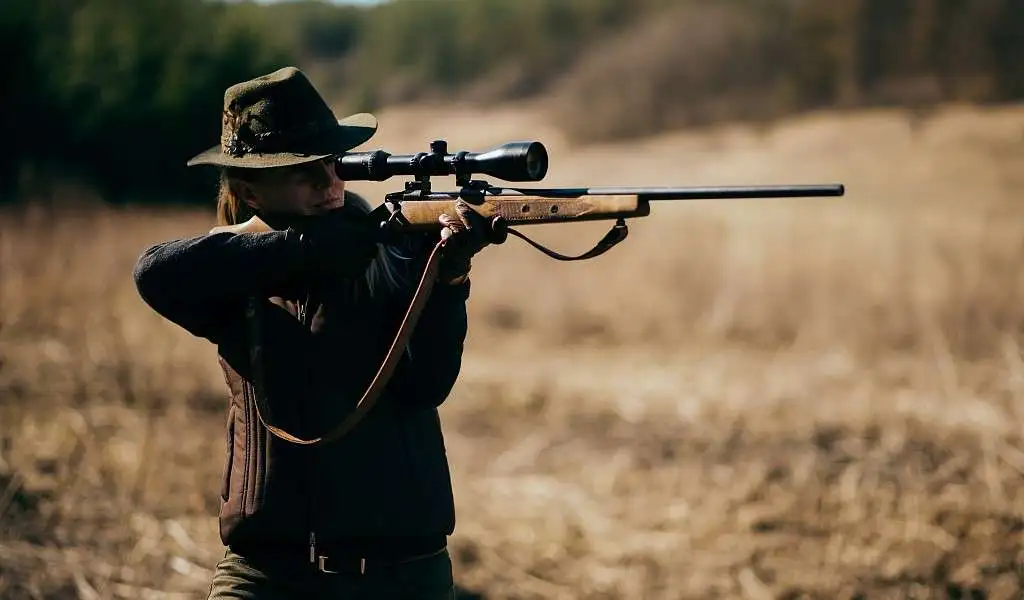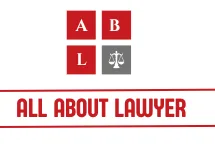Wanna Know When You Can Legally Hunt Deer in Texas? Legal Shooting Hours For Deer in Texas
Texas law prohibits deer hunting between one-half hour after sunset and one-half hour before sunrise under Section 62.004 of the Parks and Wildlife Code. The 2025-2026 deer season opened November 1st, running through January 4, 2026 in the North Zone and January 18, 2026 in the South Zone, making now the critical time to understand exactly when you can legally shoot.
This 30-minute window before sunrise and after sunset applies to all deer hunting—white-tailed and mule deer, archery or firearms, private or public land. Violations can result in Class A Parks and Wildlife misdemeanor charges, potential state jail felony for repeat offenders, and automatic license revocation. Here’s everything you need to know about legal shooting times and compliance.
Current Legal Shooting Hours for Texas Deer Hunters
Legal shooting hours for all game animals and nonmigratory game birds in Texas run from one-half hour before sunrise to one-half hour after sunset. These times change daily based on your exact location and the sunrise/sunset times for that specific day.
Key timing rules:
- Calculate shooting hours based on your hunting location’s coordinates
- Start time: 30 minutes before official sunrise
- End time: 30 minutes after official sunset
- Times vary by season, county, and even property location
Example: If sunrise in your Texas county is 7:15 AM, legal shooting starts at 6:45 AM. If sunset is 5:30 PM, shooting must stop at 6:00 PM.
Most experienced hunters use smartphone apps or official TPWD resources to track exact daily times. Guessing can cost you thousands in fines and your hunting privileges.
Related article: Wanna Know If Riding in a Truck Bed Is Legal? State Laws & Pickup Passenger Regulations

Why the 30-Minute Rule Exists (And Why It Matters)
The legal shooting hours ensure hunters can see their intended target and anything beyond it, preventing tragic accidents and ensuring ethical harvests. Texas game wardens enforce these rules strictly during peak hunting season.
The half-hour buffer serves three purposes:
- Provides adequate natural light for target identification
- Reduces accidental shooting incidents involving other hunters
- Prevents harvest of protected wildlife mistaken for deer in low light
Hunters must make reasonable efforts to retrieve wounded animals and include them in daily bag limits. Shooting at twilight when tracking becomes difficult violates both the time restriction and waste of game laws.
Shooting Hours by Deer Type and Season
Texas regulations apply identical shooting hours to both white-tailed and mule deer across all seasons. Whether you’re hunting during archery, general rifle, muzzleloader, or youth-only seasons, the same 30-minute window before and after daylight applies.
White-tailed deer hunting hours:
- Archery season: 30 minutes before sunrise to 30 minutes after sunset
- General season: Same time restrictions
- Muzzleloader season: Same time restrictions
- Youth season: Same time restrictions
Mule deer hunting hours:
- Annual bag limit of two mule deer (no more than one buck)
- Same shooting time restrictions as white-tailed deer
- Special 16-day season starting Saturday before Thanksgiving in Panhandle counties
- Identical daily time windows regardless of season type
Special considerations: Youth-only seasons (ages 16 and under) maintain standard shooting hours despite modified bag limits and dates. The 2025-2026 season includes youth-only dates January 5-18, 2026 in both zones, but time restrictions remain unchanged.
North Zone vs South Zone: Do Shooting Hours Differ?
Texas divides deer hunting into North and South Zones, but shooting hours remain identical. The North Zone season runs November 1, 2025 through January 4, 2026, while South Zone extends to January 18, 2026. Both zones follow the same sunrise/sunset calculation.
Zone differences that matter:
- Season closing dates vary (North ends earlier)
- County-specific antler restrictions may apply
- Bag limits can differ by county within zones
- Chronic Wasting Disease regulations vary by area
Zone similarities:
- Identical legal shooting hours statewide
- Same 30-minute sunrise/sunset buffer
- Uniform enforcement of time violations
- Consistent penalty structure for violations
Hunters traveling between zones must track daily sunrise/sunset changes. A location 200 miles south may have shooting hours that differ by 15-20 minutes due to latitude differences.
County-Specific Variations and Special Restrictions
While shooting hours remain statewide, counties impose additional restrictions that affect when and how you hunt. Some counties limit harvest to antlerless and unbranched antlered deer during special late seasons, though time restrictions stay constant.
County regulations to verify:
- Antler spread restrictions (13-inch or 20-inch minimums in specific counties)
- Mandatory harvest reporting requirements
- MLDP (Managed Lands Deer Program) property designations
- CWD testing and carcass disposal rules
In 28 Panhandle counties including Armstrong, Childress, and Hale, mule deer bucks must have an outside antler spread of 20 inches or greater. These restrictions don’t change shooting hours but affect which deer you can legally harvest during legal time windows.
Four North Texas counties (Collin, Dallas, Grayson, Rockwall) remain archery-only with standard time restrictions. Hunters in these areas face identical sunrise/sunset rules but must use legal archery equipment only.
What Happens If You Shoot Outside Legal Hours?
Hunting at night violates Section 62.004 and constitutes a Class A Parks and Wildlife Code misdemeanor for first offenses. Repeat violations within certain timeframes escalate to state jail felony charges.
First offense penalties:
- Class A misdemeanor charges
- Fines up to $4,000
- Up to one year in jail
- Automatic license revocation or suspension under Section 12.5015
Repeat offense consequences:
- Elevated to Parks and Wildlife Code state jail felony
- Higher fines and longer jail sentences
- Extended license suspension periods
- Civil restitution requirements
Additional consequences: Failure to pay civil restitution results in department refusal to issue licenses, tags, or permits. Hunting after failing to pay restitution becomes a Class A misdemeanor punishable by $500-$4,000 fines and up to one year in jail.
Killing a white-tailed or mule deer without landowner consent carries state jail felony charges for first-time violations, with automatic license revocation.
The Gray Area: Finishing Wounded Deer After Dark
Game wardens provide different guidance on finishing wounded deer after legal shooting hours. The law creates ambiguity hunters must navigate carefully.
What Texas law says:
- No shooting game animals after legal hours
- Knife use to dispatch wounded game may be permissible
- Context matters: legitimate recovery vs. illegal night hunting
Practical guidance:
- Document everything if you must finish a wounded deer
- Call a game warden before taking any action
- Have witnesses present if possible
- Consider waiting until morning if the animal is immobilized
Game wardens generally act reasonably when hunters report situations in advance, but they cannot officially authorize shooting after dark. The safest approach: make ethical shots during legal hours that ensure clean kills requiring no follow-up.
Compliance Tools and Best Practices
Modern technology eliminates excuses for shooting time violations. Download the official TPWD Outdoor Annual mobile app for location-based shooting hour calculations.
Essential compliance tools:
- TPWD Outdoor Annual app (automatic sunrise/sunset updates)
- GPS-enabled smartphone with hunting apps
- Physical Outdoor Annual publication with county listings
- Written record of daily shooting times for your location
Pre-hunt checklist:
- Verify exact sunrise/sunset times for hunting date
- Calculate 30-minute windows before and after
- Set phone alarms for shooting start/stop times
- Account for time needed to exit hunting area after last shot
During the hunt:
- Wear hunter orange as recommended for safety on private property
- Carry valid hunting license and identification while hunting
- Track shot times if you harvest deer near closing hours
- Allow adequate time for tracking and field dressing before dark
Late spring rains in 2025 boosted deer populations and antler development, meaning more hunters will compete for prime morning and evening hours when deer are most active.
How to Handle Common Shooting Hour Scenarios
Scenario 1: You shoot a deer at legal shooting time, but it runs
- Legal to track and recover during darkness
- Use flashlights and maintain safety protocols
- Report harvest within required timeframes
- If deer is wounded but alive, contact game warden before shooting again
Scenario 2: Sunrise/sunset occurs while you’re in your stand
- Must stop shooting immediately at cutoff time
- Can remain in stand past legal hours if needed
- Cannot shoot deer that appear after legal time ends
- Plan exit strategy that allows safe departure in darkness
Scenario 3: Weather obscures sunrise/sunset times
- Legal shooting hours based on official times, not visibility
- Cannot shoot early because of cloud cover
- Cannot extend shooting because fog reduces light
- Use official times regardless of actual light conditions
Scenario 4: Multiple hunters on property with different weapons
- All hunters follow same time restrictions
- Archery and firearms seasons have identical hours
- Youth hunters use same time windows as adults
- Coordinate group hunts to avoid confusion about legal times
Season-Specific Shooting Hour Considerations
Archery season advantages: Archery-only seasons often open earlier than general seasons, providing first access to undisturbed deer populations. However, identical shooting hours apply—30 minutes before sunrise to 30 minutes after sunset.
Muzzleloader season timing: Special muzzleloader seasons maintain standard time restrictions. Season dates run September 27-October 31, 2025 statewide, with identical daily shooting windows.
General rifle season peak: November 1-January 4 (North Zone) and November 1-January 18 (South Zone) create the most competitive hunting periods. Shooting hours don’t expand despite increased hunter numbers and deer activity.
Youth season benefits: January 5-18, 2026 youth season in both zones allows young hunters exclusive access but maintains adult-equivalent time restrictions for safety.
Landowner Rights and Time Restrictions
Private landowners and lease holders must enforce identical shooting hour regulations. Hunting without landowner permission constitutes criminal trespass, but having permission doesn’t exempt you from state shooting hour laws.
Landowner responsibilities:
- Educate lease hunters about shooting time restrictions
- Post property boundaries and access information
- Report violations to Texas game wardens
- Maintain records of hunter activity for liability protection
Lease hunter obligations: Hunt only on lands where you have permission from the owner or owner’s agent. Trespassing violations compound illegal shooting hour violations, creating multiple criminal charges.
Texas game wardens received over 1,200 documented hunting-without-license cases in recent years, demonstrating active enforcement. Time violation enforcement follows similar patterns during peak season.
How Game Wardens Enforce Shooting Hours
551 Texas game wardens patrol hunting areas statewide, with increased presence during deer season opening and peak activity periods. Enforcement methods include:
Active patrol techniques:
- Pre-dawn and post-sunset monitoring of known hunting areas
- Thermal imaging to detect hunter activity after dark
- Coordination with landowners reporting violations
- Random compliance checks during legal hours
Evidence collection:
- Time-stamped body cameras documenting encounters
- Field inspection of harvested deer (body temperature indicates time of death)
- Interview witnesses and nearby hunters
- Review trail camera footage when available
Technology use: Trail cameras help document trespassers and poachers, providing exact timestamps that prove illegal shooting activity. Game wardens can subpoena this footage during investigations.
Violation reporting: Contact Texas Parks and Wildlife Operation Game Thief hotline: 1-800-792-4263. Anonymous tips about illegal hunting activity receive investigation priority.
Chronic Wasting Disease and Additional Time Considerations
Hunters must properly discard carcass parts and follow CWD testing protocols in designated zones. While these requirements don’t affect shooting hours, they impact post-harvest activity timing.
CWD compliance timing:
- Hunters can debone carcasses to prevent disease spread
- Check station hours may differ from shooting hours
- Plan adequate time for mandatory testing and reporting
- Some counties restrict carcass transportation after dark
CWD testing stations operate during specific hours that may not align with late afternoon shooting times. Factor additional time for compliance when hunting in CWD zones.
Resources for Staying Current on Regulations
Texas deer hunting regulations change annually. TPWD updates the Outdoor Annual app automatically upon data connection, but hunters should independently verify regulations.
Official resources:
- Texas Parks and Wildlife website: tpwd.texas.gov
- TPWD customer service: 1-800-792-1112 or 512-389-4800
- County-specific regulations: tpwd.texas.gov/regulations/outdoor-annual/regs/counties
- Chronic Wasting Disease information: tpwd.texas.gov/cwd
Legal resources:
- Texas Parks and Wildlife Code Chapter 62 (hunting regulations)
- Section 62.004 (hunting at night prohibition)
- County-specific ordinances and restrictions
Planning resources: Contact local game wardens for area-specific guidance. Building relationships with area game wardens helps resolve questions before problems occur.
2025-2026 Season Updates and Changes
The 2025-2026 season benefits from late spring rains that boosted fawn survival and antler development. While shooting hours remain unchanged, improved deer populations mean more opportunities during legal time windows.
What’s new this season:
- Enhanced deer populations following favorable spring weather
- Continued CWD monitoring and testing requirements
- Mandatory harvest reporting in specific counties
- Digital tagging options through TPWD app
What hasn’t changed:
- Legal shooting hours (30 minutes before sunrise to after sunset)
- Basic bag limits (five white-tailed, two mule deer annually)
- Time violation penalty structure
- License and permit requirements
Frequently Asked Questions
Can I hunt deer at night with a spotlight in Texas?
No. Section 62.004 prohibits hunting protected game animals between one-half hour after sunset and one-half hour before sunrise. Hunting with artificial light also violates separate regulations.
Do shooting hours change if I’m hunting with archery equipment?
No. Legal shooting hours apply equally to all hunting methods—archery, firearms, muzzleloader, or crossbow. The 30-minute sunrise/sunset window applies regardless of weapon type.
What if sunrise time differs between my phone and the official TPWD app?
Use official TPWD resources or NOAA sunrise/sunset data for your exact coordinates. Legal hours are calculated from official sunrise and sunset times, not perceived light conditions.
Can I sit in my deer stand before legal shooting hours start?
Yes. You can access your hunting location before legal shooting time begins, but cannot discharge a weapon until 30 minutes before sunrise. Many hunters enter stands in darkness to avoid disturbing deer.
Do Native American tribal lands follow different shooting hours?
Some tribal lands may have separate regulations, but most follow state guidelines. Verify specific rules with tribal authorities before hunting on these properties.
How do I calculate shooting hours if I hunt on the county line?
Use the coordinates of your actual hunting location (stand or blind position) to calculate precise shooting times. County lines don’t affect calculations—latitude and longitude determine sunrise/sunset.
Are there exceptions to shooting hour rules for nuisance deer?
No standard exceptions exist for shooting hours even with nuisance permits. Special circumstances require advance coordination with TPWD officials and may involve special permits with different rules.
Disclaimer: This information is for educational purposes only and does not constitute legal advice. Deer hunting regulations change annually and may be updated during the season. Consult an attorney specializing in hunting law or contact the Texas Parks and Wildlife Department at 1-800-792-1112 for legal guidance. Always verify current regulations through official TPWD resources at tpwd.texas.gov before hunting. Hunters are responsible for knowing and following all applicable laws, including federal regulations on certain lands.
Related Resources:
- Texas Property Tax Appeal Attorney – Legal guidance for property disputes
- Theft Laws in Colorado – Understanding property crime regulations
- Kentucky Property Right of Way Laws – Landowner rights and access issues
About the Author

Sarah Klein, JD, is a licensed attorney and legal content strategist with over 12 years of experience across civil, criminal, family, and regulatory law. At All About Lawyer, she covers a wide range of legal topics — from high-profile lawsuits and courtroom stories to state traffic laws and everyday legal questions — all with a focus on accuracy, clarity, and public understanding.
Her writing blends real legal insight with plain-English explanations, helping readers stay informed and legally aware.
Read more about Sarah
